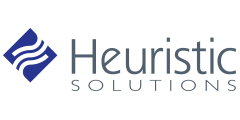What’s in a member profile? Or, what should be in a member profile? The answer just might save you (and your constituents) a lot of time. A comprehensive and accessible member record streamlines your certification management process, enables robust reporting, and empowers self-service. Think about the alternative: If the users who log in to your system don’t have access to everything they need at their fingertips, it will slow them down.
What if your staff needs to check if someone received a notification? What if they need to contact constituents who have moved or changed jobs? What if they need to access information a practitioner has uploaded into the system? The answer: A member record that captures all the information you need. And…you might need more information than you think.
The member record isn’t just an administrative resource. What if your candidates need to access their transcripts, exam results, or work samples? What if they need to change their name or address? What if they need to confirm the status of a payment? They don’t want to call you about it, and you don’t want to spend all your time on the phone. The answer: A member record with everything your members need in one place.
A successful member record might not even be noticeable precisely because it works so well. With the right software solution, your member record can be a robust resource that supports end-user self-service.
Making the Member Record: Collecting Demographic Data and More
A comprehensive member record lets certification organizations capture the relevant constituent demographic information needed to support both operations and reporting requirements. The member record can capture contact information and information about the member’s employer, as well. The demographic information you need from your candidates may be different from that of, say, education providers. It helps to have a system that can accommodate registration forms and data requirements for different types of users.
It’s almost always easier to have your end users submit their information all at once than have to hunt it down when the need arises. For example, practitioners often register with their work email. If practitioner changes jobs, you might want to collect a work email and a personal email. Even if you only use automated email notifications, you may still want to collect a mobile phone number. You might switch to SMS messaging later on.
As a user takes actions, like submitting an application, paying fees, engaging with notifications, uploading documents and files, or even registering for an exam, their record grows. Instead of a bulging folder stuffed in a cabinet drawer, a good digital member record is secure, organized, and easy to navigate.
Using the Member Record: Making Data Accessible for Self-Service
At any moment, can your members retrieve the data that they need about their participation in your program? Once they add it, do they know where to find it, and how to update it if needed? The requests that we tend to see most often in the LearningBuilder community are name changes, account recoveries, transcripts, and proofs of certification or completion.
From an operations perspective, a member record should include all payment and communications activity. All relevant documents, both shared with the organization by the practitioner and shared with the practitioner by the organization, should also be available.
An accessible member record is the “secret sauce” of streamlined operations and reporting. When constituents can access their information through a self-service portal, they can update their records themselves. They can also answer many of their own questions.
How LearningBuilder Harnesses the Power of the Member Record
After more than a decade of analyzing and responding to credentialing client needs, we’ve learned a few things about self-service as a function of information, access, and UX. Our flexible, extendable data architecture can collect and store a tremendous amount of information, so you can create robust member records for many types of users. We also have the ability to configure member records that fulfill your unique organizational requirements.
When a user navigates to their account page, it’s easy for them to update their contact information and change their password. An easy-to-read navigation bar offers one-click access to payment and communications histories, uploads, and more.
LearningBuilder software is also ready to integrate with association and customer relationship management systems through single sign-on (SSO). We ensure that member data (and member record changes) flow back and forth between platforms. More importantly, you’ll never be limited by what your AMS or CRM can gather; LearningBuilder can also collect any additional data you require.
LearningBuilder: Supporting Staff and Certificant Self-Service
At Heuristics, we believe all your stakeholders should be able to do more within your system. Are you exploring more comprehensive candidate and credential management solutions? If you plan to attend the ASAE Annual Conference this year, we’ll be at booth #437. Let’s make a plan to connect at the event! If we miss you, or you’re skipping this year, feel free to go ahead and schedule an exploratory call with us at your convenience.




